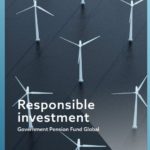Sustainability reports offer plenty of eye candy, but can they actually help managers make better decisions?
Three weeks before Al Gore won the Nobel Peace Prize for his efforts to sound the alarm on climate change, a coalition of investors, state governments, and environmental groups was sounding an alarm of its own. It petitioned the Securities and Exchange Commission to require publicly traded companies to disclose more data on the potential financial impacts of climate change. The coalition argues that the risks companies face regarding climate change are now material to shareholder investment decisions and should be disclosed under existing law.
That clamor may surprise anyone who has followed the rise of "sustainability reporting," the practice of publicizing a company’s environmental and social risks, responsibilities, and opportunities. While sustainability is difficult to define, it has been a corporate buzzword for at least two decades. And for the past six years, companies have had at least one formal framework to follow when communicating their sustainability efforts and exposures, that of the Global Reporting Initiative (GRI), an Amsterdam-based nonprofit organization comprising business, government, social advocacy, and other stakeholders.
advertisement Now in its third iteration, the GRI framework has brought increasing levels of rigor to the practice of sustainability reporting by providing guidance on everything from how to craft a broad statement of strategy to which specific performance indicators to measure in six comprehensive categories (from environmental issues to human rights to product safety). More than 1,200 companies have followed the GRI framework, and hundreds of others produce sustainability reports based on other guidance or their own criteria.
A sustainability report can be thought of as an environmental-impact statement for the entire corporation, with "environment" defined not only in terms of natural resources and climatological effects but also the economic and social impacts of labor practices, charitable endeavors, and governance structures. PepsiCo CEO Indra Nooyi summarizes the sustainability movement as "performance with a purpose," and has told audiences that "there is no escaping that our businesses are inextricably and profoundly linked to the world and the people around us."
Quantifying those many links is not easy, but the GRI framework has, over the years, become much more detailed regarding the performance indicators that companies are urged to measure and monitor. In the "emissions, effluents, and waste" subcategory, for example, the framework advises companies to report "total direct and indirect greenhouse-gas emissions by weight," and "total weight of waste by type and disposal method." In all, the framework identifies nearly 80 indicators, many of which can be further broken down into further subcategories.
That might lead CFOs to believe that a typical sustainability report is chock full of tabular data detailing everything from CO2 emissions to product recalls to employee turnover. In truth, most sustainability reports are light on numbers and heavy on photographs. "There are lots of pictures of butterflies, lakes, and mountains," says Mikko Valtonen of Proventia Solutions, "because often these reports are prepared by environmentally focused employees in the public-relations department" keen to burnish a company’s pro-environmental image.
And not without reason. Sustainability reporting is in many ways a response to the long-standing push for socially responsible investing. As specialized mutual funds and institutional investors began to ask senior management not only about the size of the bottom line but also the manner in which it was achieved, companies responded by providing more information on a host of environmental and social practices. "But companies have often been pulled in two directions," says Sean Gilbert, technical director at the GRI. "Some analysts want hard data in an accessible format that allows for uniform comparison, but other investors want a narrative around strategic issues supported by limited data."
Scott Leibs
CFO Magazine



